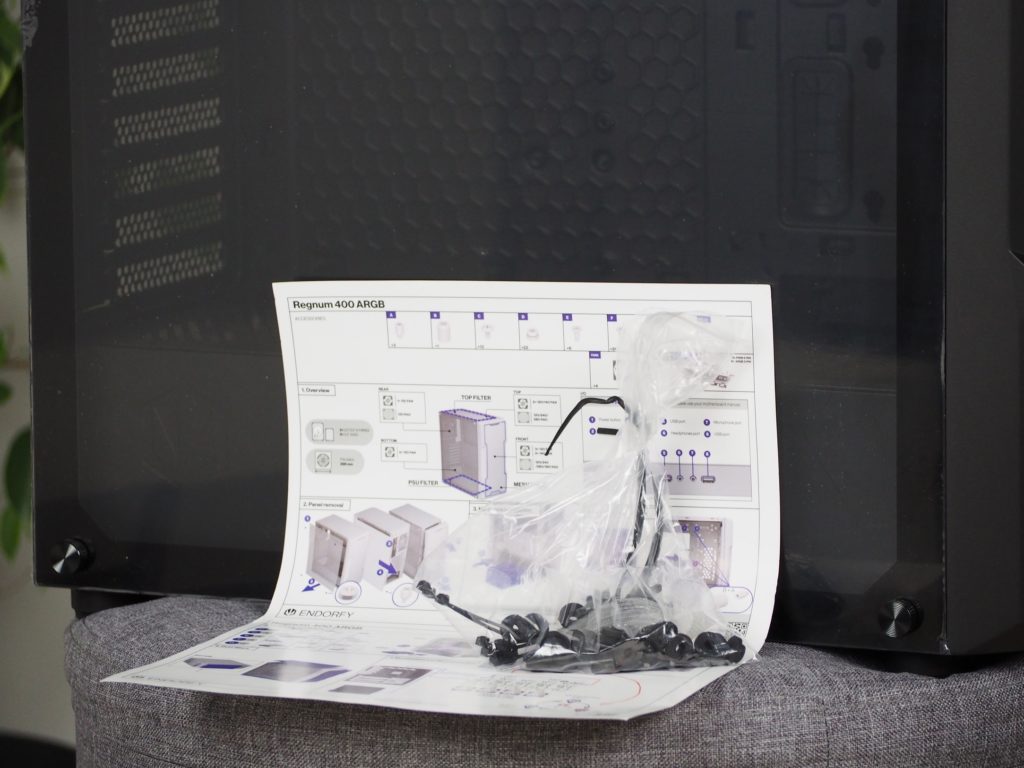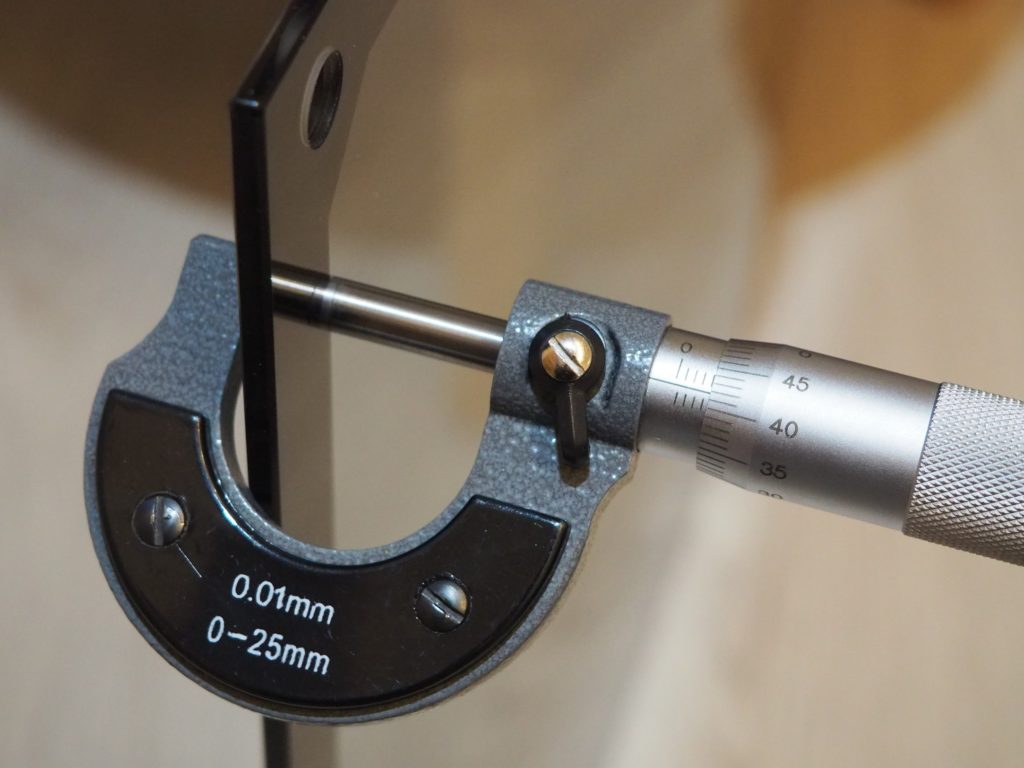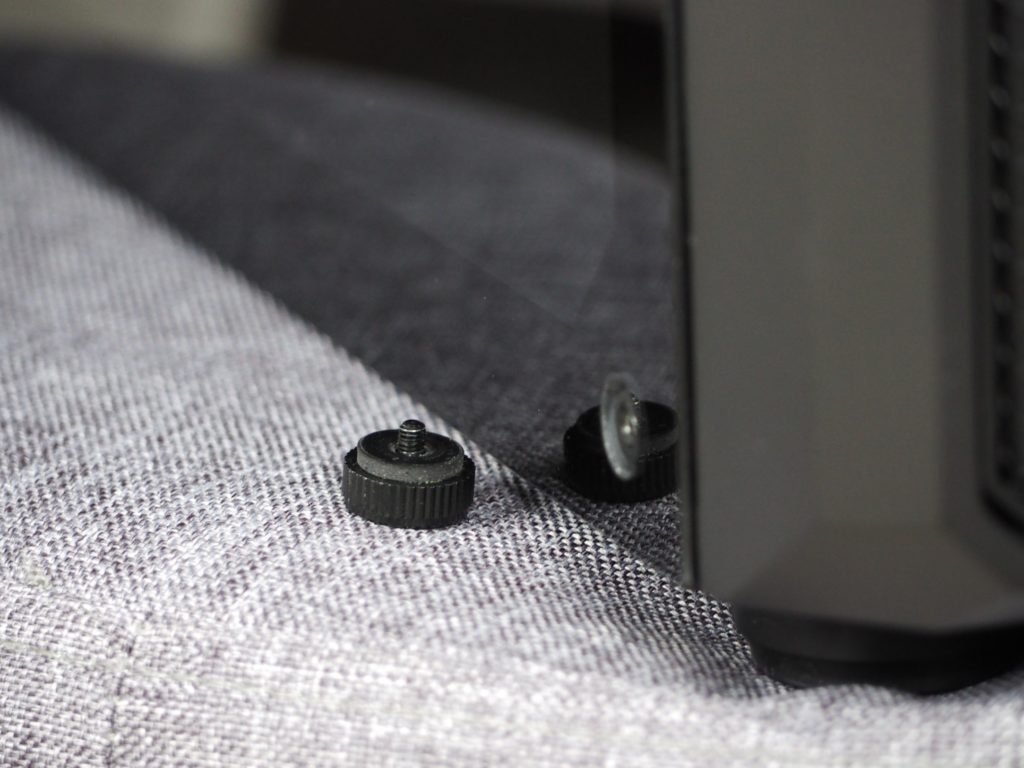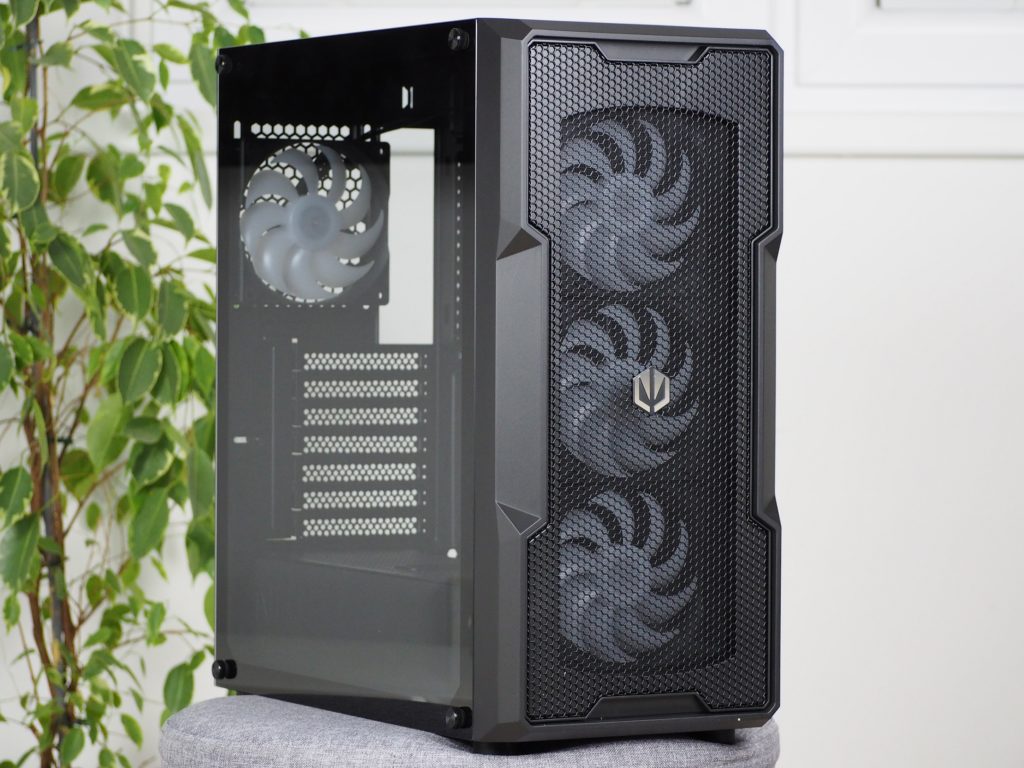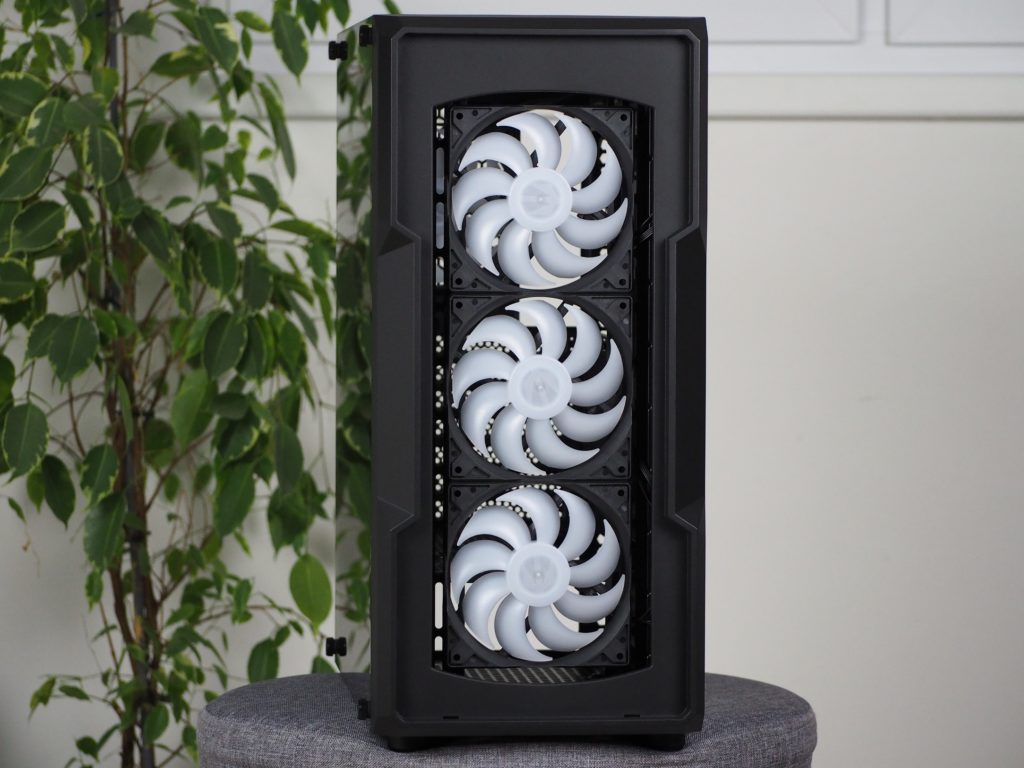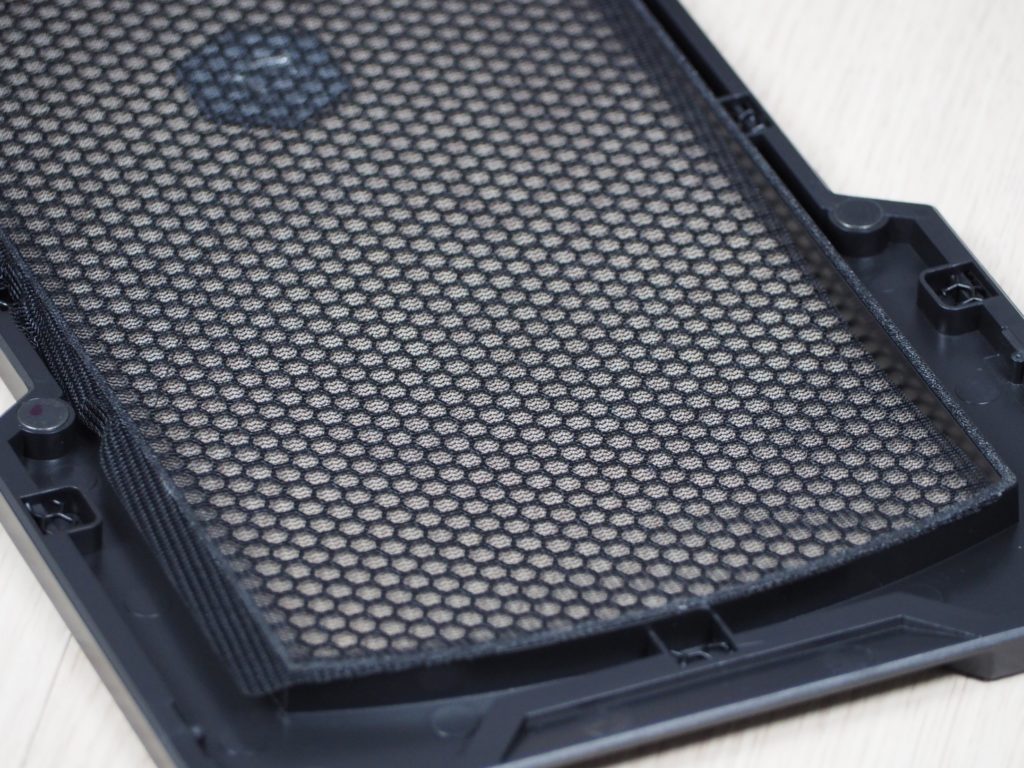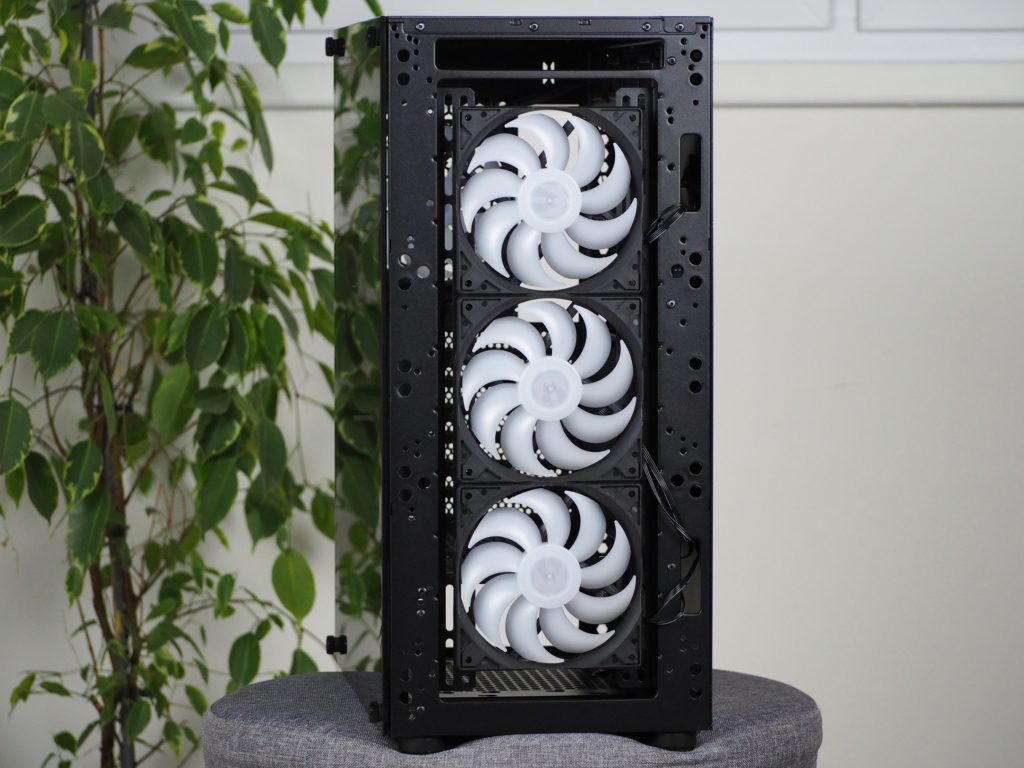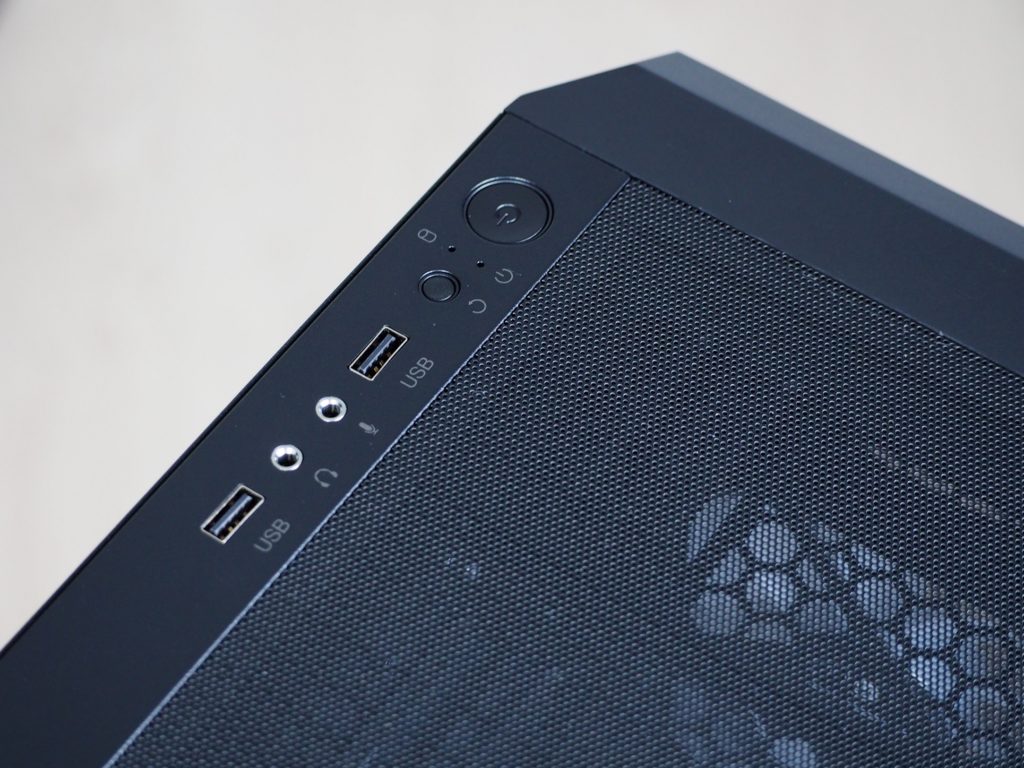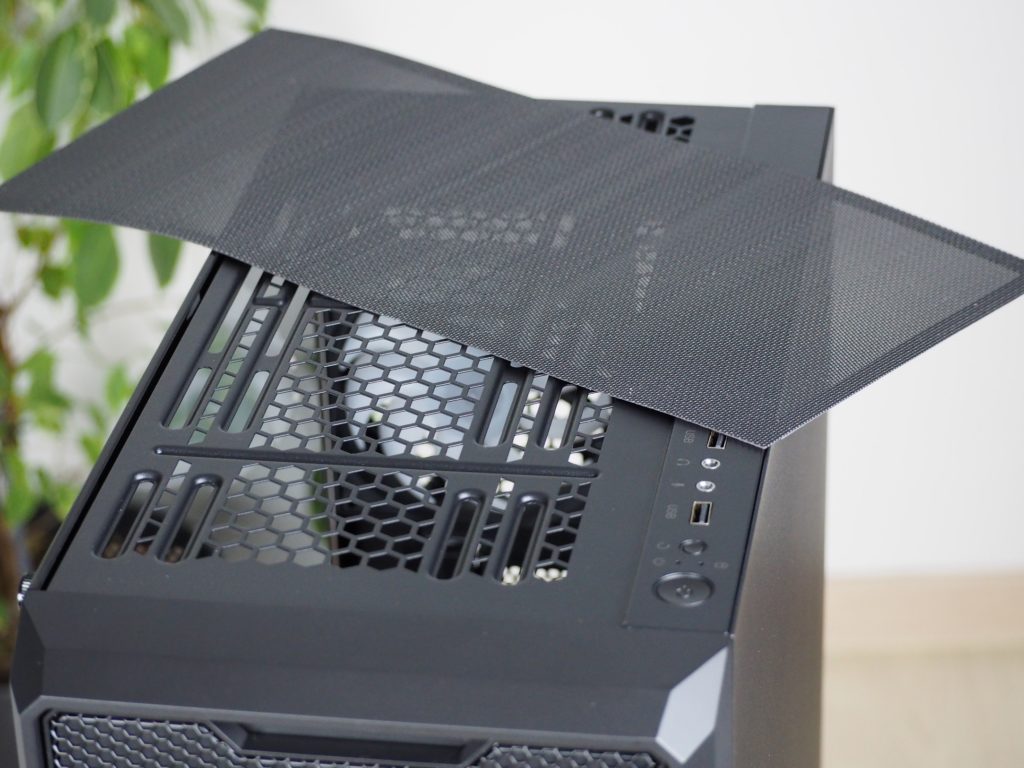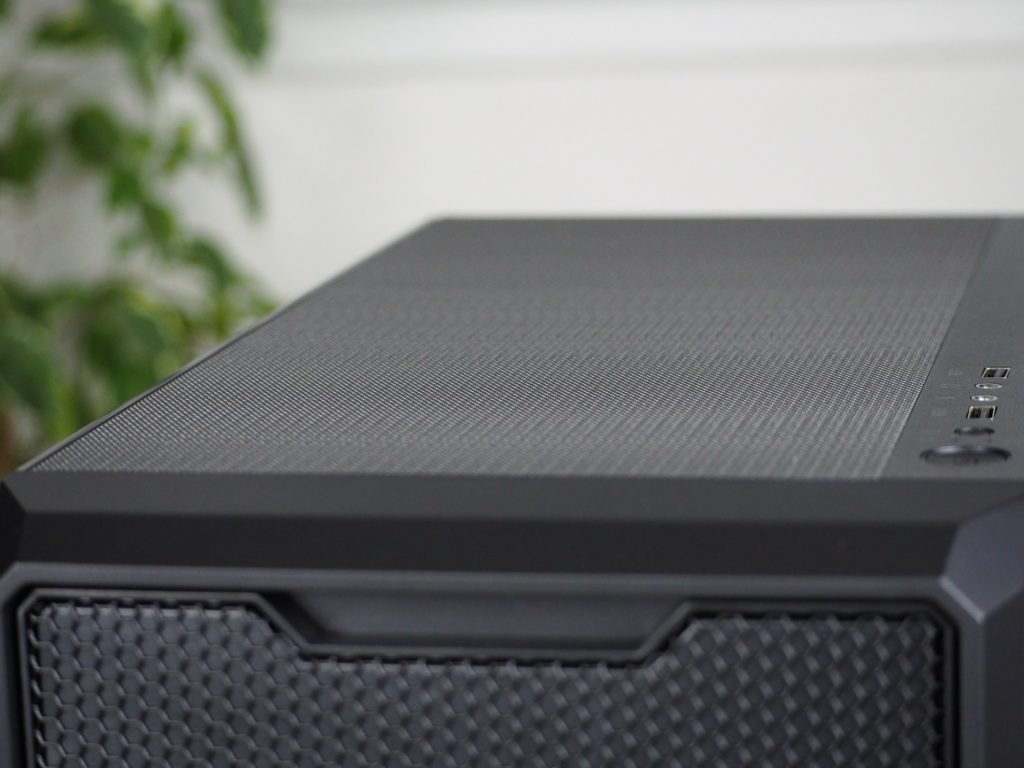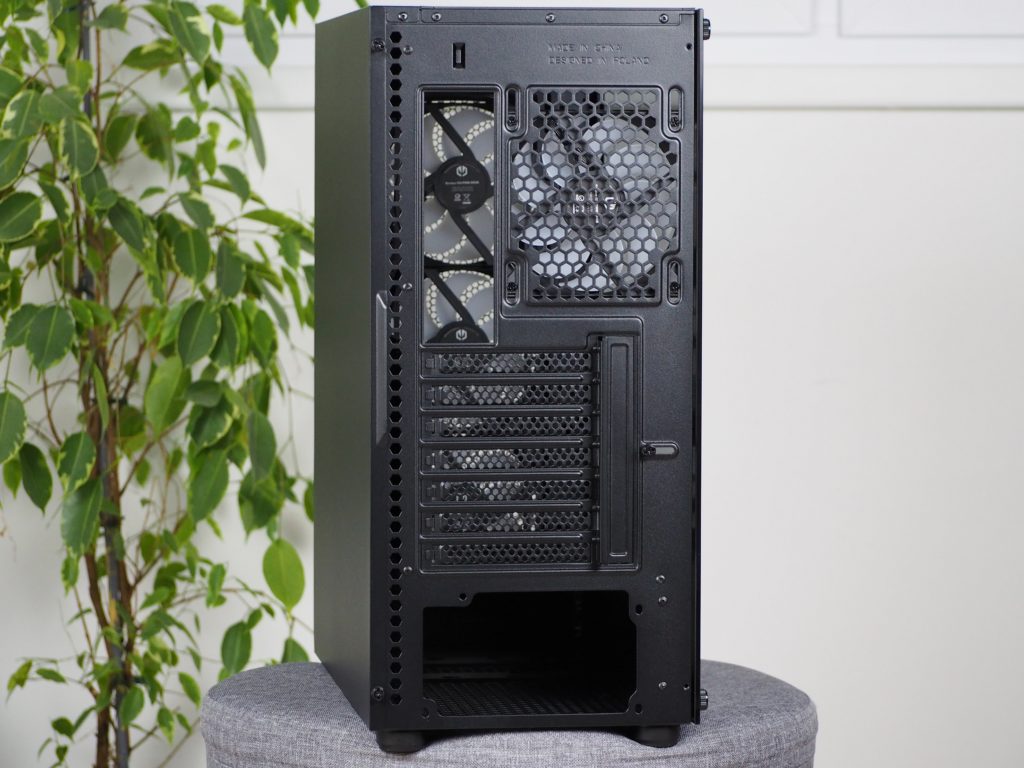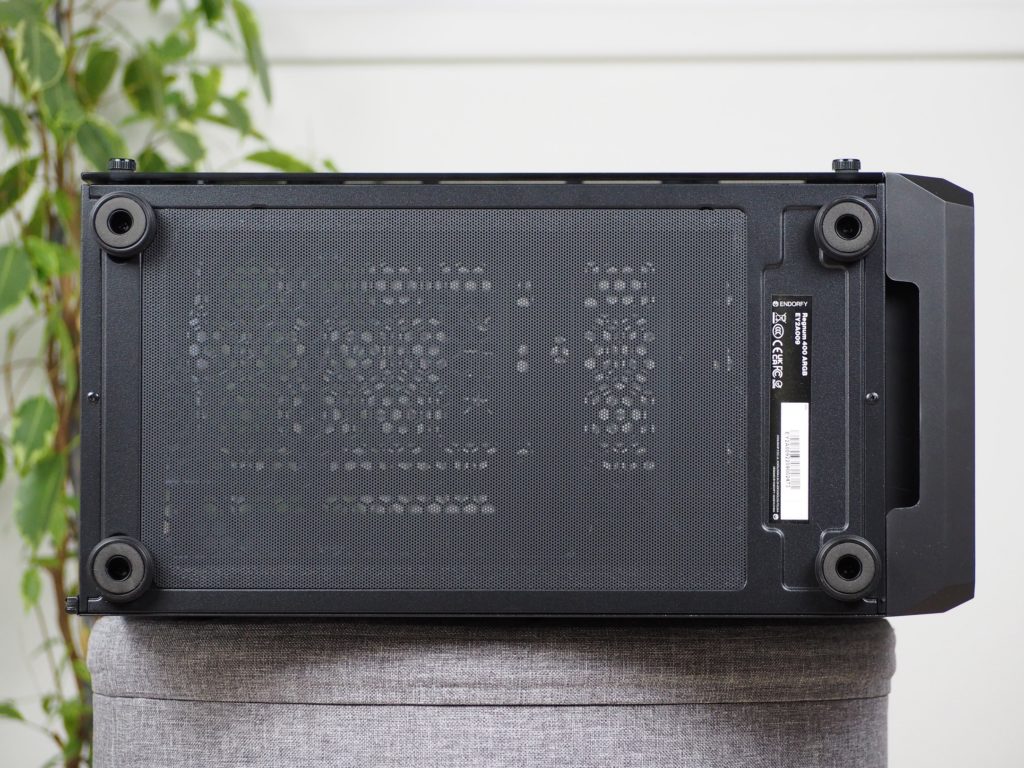Exterior
Through gradual evolution and refinement, Endorfy (formerly SilentiumPC) Regnum cases have progressed from the low end to the other side of the spectrum, to the peak. The “400” model with RGB lighting already costs over a hundred euros, but you don’t just pay for attractive visuals. There are up to four fans, three of which are behind a well ventilated mask. But we also came across things that can still be improved.
A little retrospective intro: the Regnum cases used to belong to the low-end, but gradually over the generations they have moved out of it and this place was first taken by the newer Signum and later Ventum series. At the same time, the Polish company dropped the Gladius series (categorically above the Regnum) and the position was completely reversed. At the top of Endorfy’s case offer is now the tested Regnum 400 ARGB.
Basic parameters
| Parameters | Endorfy |
| Regnum 400 ARGB | |
| Supported motherboard formats | Mini-ITX, mATX, ATX |
| Supported PSU format | ATX |
| CPU cooler | up to 162 mm |
| Graphics cards | up to 370 mm |
| Fan | 8× 120 mm (4× pre-installed)/4× 140 mm |
| Supported liquid radiators | 1× do 360 mm + 1× do 280mm |
| 2,5" positions | 2 + 2 shared |
| 3,5" positions | 2 shared |
| 5,25" positions | 0 |
| Dimensions [H/D/W] (and volume) | 472 × 442 × 220 mm (46 l) |
| Weight | 6.3 kg |
| Materials | steel + plastic + tempered glass |
| Connectivity | 2× USB 3.2 gen. 1 type A + 2× 3,5mm jack |
| Approximate price | 95 EUR |
Exterior
The box is securely fitted in a cardboard box with polystyrene, which crumbles a little as with most other boxes where foam has not been used for the lining. The accessories include only the bare essentials for fitting the hardware. Screws and single-use zip ties along with illustrated instructions.
The tempered glass in the left side panel position is held in place at all corners by screws. Personally, I don’t like this style of glass mounting. I always get the feeling that it will slip and fall out before the first screw is put in. The screw is fitted with a soft washer on the area where it touches the glass so as not to damage it. The build of the screws is of a good quality. No glue spills from the pad and they don’t fall apart. The glass has an atypical thickness of just over 3.9 millimetres.
The front panel is composed of two parts. The first is a large dust filter with a fine perforation that catches even finer dirt. Removing it is quick and easy thanks to the handle and magnets on its sides. You don’t have to disassemble anything for cleaning. The second part is the frame, which separates the filter from the fans while keeping them on top of each other.
The fasteners from the second part are already holding firmly on the structure. The front is removed by pulling the handle from underneath the case. After removing it, you can get to the fans. There are three of these, and they are the 120mm Stratus 120 PWM ARGB models. They are similar in shape to the Fluctus, which we have already tested, but they don’t have teeth on the blades and with 1400 rpm they are slower. If you would like to swap them out, there is also the option of installing 140mm ones. But you can only fit two of those. A liquid cooler radiator can be installed in the front up to 360mm format (i.e. including 280mm).
The I/O panel on the top of the case is oriented along the right side. If you keep the case under the desk, you may have more difficulty accessing distant connectors because of its orientation. There are two USB ports and an equal number of 3.5mm jacks between them (separate for headphones, separate for microphone). At the price range, however, I do miss a USB-C connector here, which is becoming more and more widely used. The button to change the fan lighting mode or to reboot (depending on the wiring) is slightly recessed into the structure. Since its diameter is small and needs to be pressed deeper, pressing it is not comfortable at all. Especially if you are changing the backlight mode and need to switch between inconvenient ones. Then there are two LEDs, one for disk activity and the other to indicate the power on status. I have no complaints about the large power button. Even the tactile response is very perceptible.
The rest of the top is covered with a fine dust filter. Its left side starts directly from the tempered glass. Together with the recessed level design this part looks good. The holes in the perforation are larger, roughly one millimeter. Since the positions here are primarily for sucking air out of the case, I don’t consider this a shortcoming. You can fit a 240/280mm liquid cooler radiator or two 120/140mm fans here to take care of the heated air more easily.
The rear side comes standard with a slot for the motherboard I/O panel and a 120mm fan vent next to it. The latter is also fitted with the same Stratus as are also on the front. The size of the case won’t let up and a larger one won’t fit. For PCI Express expansion cards there are seven positions, which have a simple screw cap for a nicer look in this part of the case as well. There is no lack of a hole at the bottom for the ATX power supply.
Personally, I’m disappointed in the screws that hold the right side panel on. For a nearly hundred euro case, I can imagine using a double threaded screw. These don’t need to be pulled out of the side panel when opening it, so there is less chance of them getting lost.
The bottom part is one big filter on magnets. This has the same holes as the top filter, which is a rather unfortunate solution. Thus, in dustier environments or when stored on the ground, the power supply can pull smaller dirt particles directly into itself or further into the case. In order to have somewhere to pull the cool air, however, the feet hold the case less than 20 mm off the ground. Their grip is not high and you can move the case with less force.
- Contents
- Exterior
- Interior
- Test methodology
- CPU and GPU cooling tests
- Motherboard cooling tests
- SSD cooling tests and under-ceiling temperature
- Conclusion






